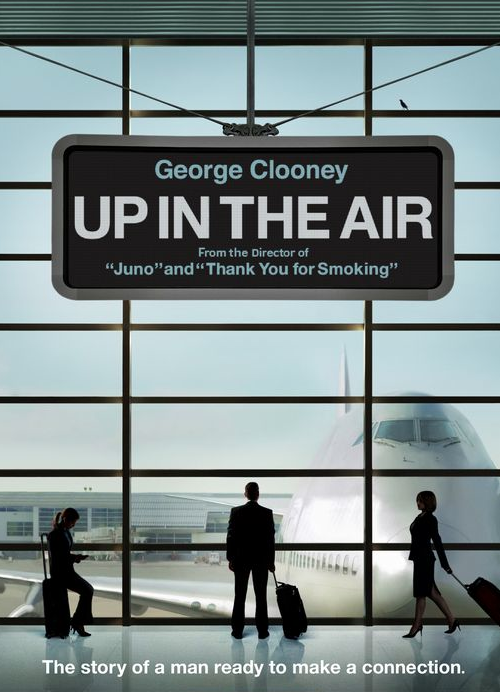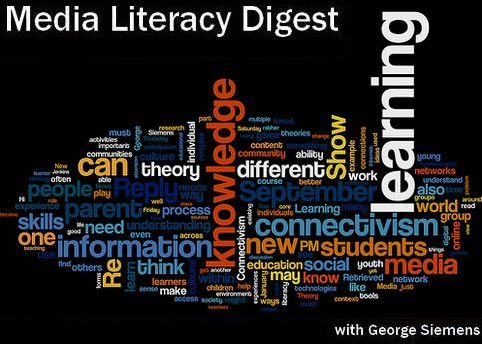
"Being in the air is the last refuge for those that wish to be alone." Jason Reitman) There are profound connections between Avatar and Up in the Air. Both movies come at a time that can best be described as dystopic. From Afghanistan, Iraq and other countries mired in war to the deepest and most serious recession since the 1930's, to the ongoing crisis of climate change, the first decade of the 21st Century has been characterized by waves of loss, violence and instability.
What then allows any individual to compose their identity and to maintain their sense of self as the air around the planet gets thinner and thinner? How does the imagination work within a dystopia?
Up in the Air explores the tropes of loneliness and travel -- the in-between of airports and hotels, those places that are not places but nevertheless retain many of the trappings of home without the same responsibilities and challenges. There are consequences to being on the road 300 days of the year and among them is the construction of an artificial universe to live in like the metal tubes we describe as airplanes. One of the other consequences is that frequent travelers have to build imaginary lives that are fundamentally disconnected from intimacy and genuine conversation.
Ironically, Avatar imagines a world that is for a time dragged into the dystopia of 21st century life and where at the end of the day, a new vision is constructed. Avatar's use of 3D will be the subject of another article soon, but suffice to say that the worlds James Cameron constructs through motion capture and animation are among the most beautiful that the cinema has ever seen.
Hidden behind both films is a plaintiff plea for love and genuine relationships. Avatar explores this through tales of transmigrating spirits and animistic notions that transform animals and nature itself into a vast Gaia-like system of communications and interaction. The N'avi are a synthesis of Cameron's rather superficial understanding of Aboriginal peoples, although their language is a fascinating blend created by Paul Frommer from the University of Southern California.
The flesh of avatars in the film are not virtual but as the main character, Jake Sully discovers, the N'avi are the true inheritors of the planet they live on, a exotic version of early Earth called Pandora. In Greek mythology Pandora is actually derived from 'nav' and was the first woman. The Pandora myth asks the question why there is evil in the world which is a central thematic of Avatar.
Up in the Air asks the same question but from the perspective of a rapacious corporation which sends its employees out to fire people for other companies or as the main character, Ryan Bingham says to save weak managers from the tasks for which they were hired. The film also asks why there is evil in the world and suggests that any escape, even the one that sees you flying all year doesn't lead to salvation.
Both films explore the loss of meaning, morality and principles in worlds both real and unreal. Avatar provides the simplest solution, migrate from a humanoid body and spirit to a N'avi to discover not only who you are but how to live in the world. **Up in the Air** suggests that love will solve the dystopic only to discover that casual relationships never lead to truth and friendship.
These are 21st century morality tales. Avatar is a semi-religious film of conversion not so much to truth but to the true God, who is now a mother. Up in the Air teaches Ryan that life is never complete when it is entirely an imaginary construction.
It is however, the reanimation of the human body in Avatar that is the most interesting reflection of the challenges of overcoming the impact of this first decade of the 21st century. Jake Sully is able to transcend his wheelchair and become another being, now connected to a tribe. He is able to return to a period of life when innocence and naivete enable and empower — when the wonders of living can be experienced without the mediations of history and loss. This of course is also the promise of 3D technology, to reanimate images such that they reach into the spectator's body, so we can share those moments as if we have transcended the limitations of our corporeal selves.
James Cameron's digital utopia, full of exotic colours, people, plants and animals suggests that escape is possible in much the same way as Ryan Bingham imagines a world without the constraints that are its very essence. 3D technology promises to allow us to transcend our conventional notions of space and time but it cannot bring the earth back to its pristine form nor reverse engineer evolution or history. At the same time, Avatar represent a shift in the way in which images are created, in the ways in which we watch them and also in the potential to think differently about our imaginations and about our future. (Imagine a 3D film about the destruction of the Amazon!)
 Tuesday, February 23, 2010 at 11:47PM
Tuesday, February 23, 2010 at 11:47PM 




